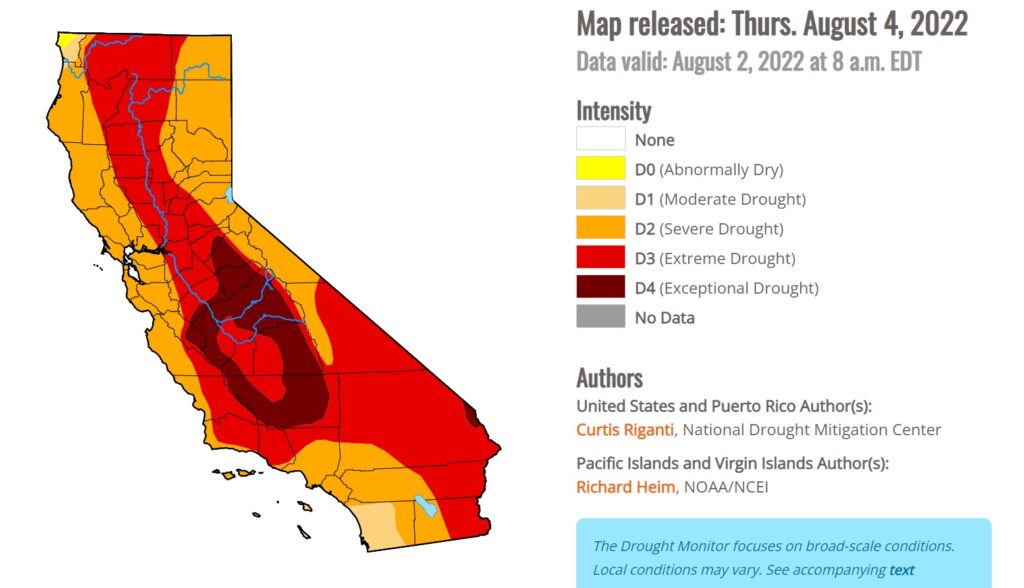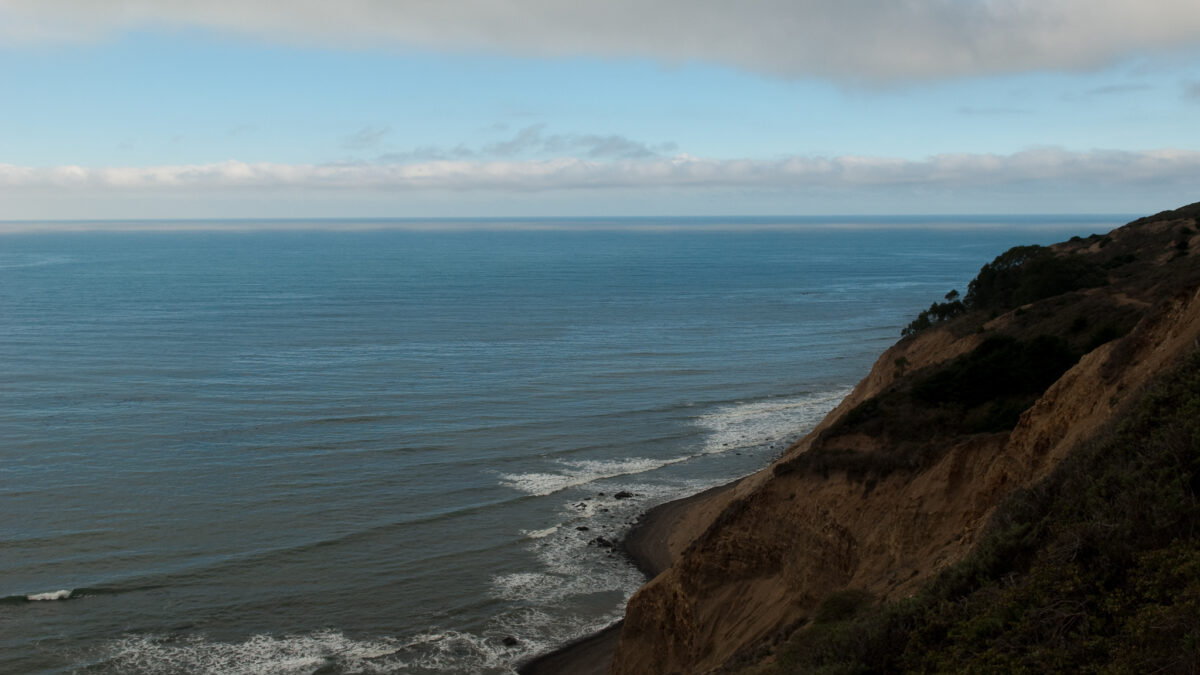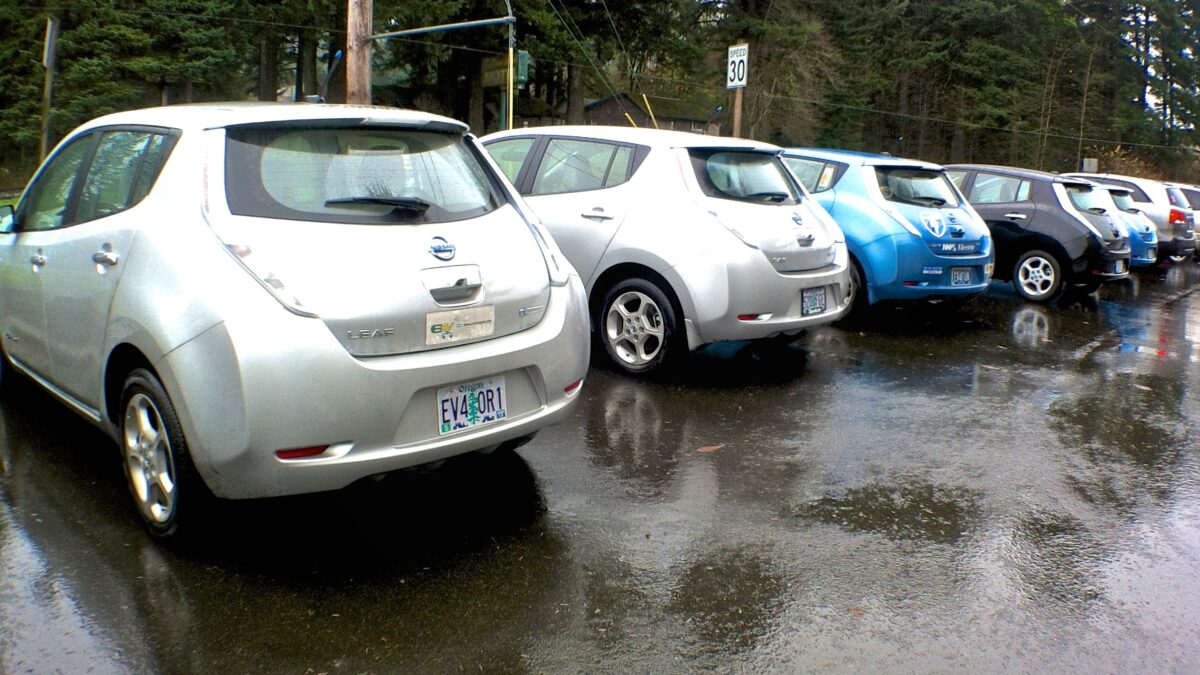The American West is facing its longest drought in 1,200 years, presenting the nation with its worst water crisis since the Dust Bowl of the early 20th century.
The Colorado River Basin, which operates as a lifeline for 40 million people across seven states, is drying up. Lake Powell is at its lowest water level since 1969, just six years after the reservoir along the Utah-Arizona border was filled by the Glen Canyon Dam. Further downstream, Lake Mead has dropped to its lowest level since 1937, two years after the completion of the Hoover Dam. Water levels are now so low that areas once reliably blue have receded to reveal empty canyons seen from space. Below are time-lapse images of Lake Mead from NASA’s Earth Observatory published in July:

“Every large city in the West is struggling to meet its water demand,” said Nephi Cole, co-host of the “Your Mountain” podcast and former water policy adviser for Wyoming Gov. Matt Mead. “The population in the West continues to go up, but there’s not going to be more water.”
The situation is growing increasingly dire as state and local governments implement mandatory water cuts that are only expected to become more severe as the drought continues. Lakes Mead and Powell, the nation’s two largest reservoirs, are running so low that each is on the verge of “deadpool status,” wherein their respective dams will no longer produce power. In the eyes of the U.S. Bureau of Reclamation, the government agency responsible for managing the dams, electricity is secondary to clean drinking water, and by 2024, the surrounding regions could lose access to hydroelectric power if not by next year.
In California, the last in line with claims to the Colorado River, more than 6 million residents in the southern half of the state have remained under water restrictions since the first of June. While restrictions vary among local jurisdictions, rules primarily target outdoor watering, though state officials are also asking residents to cut their shower times by half and refrain from baths. The rules and recommendations aim to meet demands from the Metropolitan Water District of Southern California to reduce water use by 35 percent.
According to the U.S. Drought Monitor as of last week, the entire state of California remains under drought conditions, with more than 97 percent of the state suffering conditions considered “severe.”

These conditions are unlikely to reverse. California dry periods have lasted 200 years, and the present drought only began in 2000. Los Angeles in particular will not be able to rely on the Colorado River much longer, though that’s where the city gets half its imported water. Snowpack in the Sierra Nevada, another primary source funneled hundreds of miles through the California State Water Project, is also shrinking.
Arizona and New Mexico Are Desert States. California Has an Ocean
Arizona, Nevada, and New Mexico are landlocked states at the mercy of the Colorado River’s fate. California, on the other hand, is the nation’s most populated state with one of the longest coastlines.
Despite supplies drying up, California water officials vetoed plans for a $1.4 billion desalination project in May, which would have offered L.A. residents 50 million gallons of potable water by next year from the Pacific. The state Coastal Commission, citing a risk to marine habitat and “environmental justice,” unanimously rejected the proposal for a plant in Huntington Beach after a two-decade effort to meet the requests of public officials. Commissioners argued the energy-intensive process of desalination presented too much of a coastal hazard while raising local water prices.
Energy expert and environmental author Michael Shellenberger told The Federalist, however, that habitat concerns are overblown by interest groups such as the Sierra Club and Natural Resources Defense Council masquerading as crusaders for the climate.
“These are all issues that groups that don’t want more abundant energy and water and food raise as supposedly obstacles, but they’re all dealt with through relatively straightforward technical fixes,” Shellenberger said.
Salt runoff, for example, can be captured and stored inland, or even dropped in the open ocean without a significant change in the ocean’s overall salinity.
“You just have to make sure that you’ve got mitigation,” Shellenberger explained. This includes simple fixes — which are opposed by these same groups that deploy the same tactics to shut down nuclear power — which are already used to desalinate nearby water while offering emissions-free electricity. Opponents to nuclear and desalination, however, have “imposed scarcity” to keep California free of more people such technologies could bring.
After the billion-dollar plant in Huntington Beach failed, California has two more desalination projects in the pipeline, with votes on their approval expected this fall.
The Doheny Ocean Desalination Plant is another project planned for Orange County, which, if constructed, would produce up to 5 million gallons of potable water per day, a tenth of what the doomed plant at Huntington Beach would have offered.
The plant’s Chief Engineer Marc Serna explained to The Federalist that the project could be operational by the end of 2026 if approval meetings with regulators go according to plan.
“The obstacle, of course, are first of all permits,” Serna said, adding that, so far, “we do have a lot of positive support from both the Coastal Commission and State Lands Commission.”
Sheena Johnson, the spokeswoman for the South Coast Water District, told The Federalist that the $140 million project has so far received $32.4 million in grants.
A larger project further up the coast has been proposed for Monterey County. If approved, the Monterey Peninsula Water Supply Project would produce up to 6.4 million gallons of potable water daily at a construction cost of $322 million. Local residents are dependent on the nearby Carmel River and remain under stage 1 water restrictions to protect the delicate ecosystem from excessive drainage.
The approval of both projects is uncertain after the state Coastal Commission’s unanimous decision to axe what would have been California’s largest desalination project at Huntington Beach. As of now, there are only 12 operating desalination plants in the state of nearly 40 million people.
“There’s no reason to have scarcity of water in one of the richest states that’s existed in the entire world,” Shellenberger said. “This is not rocket science.”
California could also take lessons from Israel.
Replenishing the Sea of Galilee
No nation on Earth has been as successful at transforming seawater into a drinkable resource as Israel, half of which exists in an arid region of the Middle East.
A four-year drought between 2014-2018 left the world’s lowest freshwater lake, the Sea of Galilee, even lower from overuse and irregular rainfall. Excess output of desalinated water, however, has replenished the lake to its maximum capacity for the first time in three decades. In July, the country introduced plans to use desalinated water from the Sea of Galilee to make the Jordan River safe for swimming again.
Today, five seawater desalination plants allow Israel to produce 20 percent more water than it needs, with two more projects in development expected to be operational next year.
“Upon completion of the seventh facility, desalinated water will cover up to 90 percent of Israel’s annual municipal and industrial water consumption,” writes Israeli journalist Max Kaplan-Zantopp. “To remain resilient in the drought-projected years to come, the Israeli government in 2018 updated its desalination with a target to produce 1.1 [billion cubic meters] of desalinated water by 2030.”
Israel’s desalination efforts have been so successful that they’ve attracted interest from their parched desert neighbors. Last year, Israel entered into an agreement with Jordan and the UAE to swap solar power from Jordan for water from Israel.
Israeli groups, according to Kaplan-Zantopp, are also exporting “expertise, technologies, and policy strategies with neighboring and distant communities suffering from endemic water crises.”
In Shellenberger’s eyes, there’s no reason that California being on the “technological frontier” can’t play a major role in the global desalination trade.
“We should be pioneering desalination technologies,” Shellenberger said. “We have an obligation to do it.”









